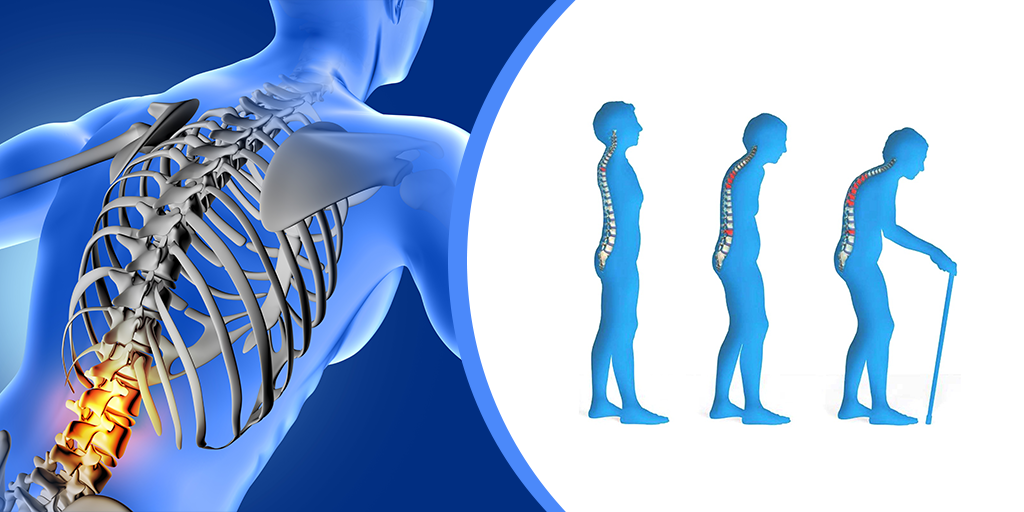What is Osteoporosis?
Osteoporosis is a condition of fragile bone that has increased susceptibility to fracture. The condition weakens bone and increases the risk of bones breaking.
(People Also Like To Read: New Research Says: Obesity In Young Children May Impact Liver Health)
The disease occurs when there is an imbalance between the new bone formation and the old bone resorption. The body fails to form enough new bone and too much old bone reabsorbed, or both.
There are two essential minerals for healthy bone formation are phosphate and calcium. Throughout youth, the body uses these minerals to produce and develop bones. Calcium is essential for proper functioning of the brain, heart, and other organs of the body.
To keep those critical organs functioning, the body reabsorbs calcium that is stored in the bones to maintain the blood calcium levels.
If calcium intake is insufficient or if the body does not absorb enough calcium from the diet, bone tissue and bone production may suffer. Thus, the bones may become weaker and weaker, resulting in brittle and fragile bones that can break easily.
Facts Related To Osteoporosis:
Bone mass or bone density decreases after on an average of 33-35 years of age, and bone loss occurs more rapidly in women after menopause.
Key risk factors for the disease including lack of exercise, genetics, lack of vitamin D and calcium, history of fracture as an adult, alcohol consumption, smoking, history of rheumatoid arthritis, family history of osteoporosis, and low body weight.
Patients with the disease have no symptoms or signs until bone fractures occur.
The diagnosis of osteoporosis can be recommended by X-rays and confirmed by tests to measure bone density.
Treatments for osteoporosis include stopping the use of cigarettes, alcohol, and assuring adequate exercise, calcium, and vitamin D.
(You Might Also Like To Read: How Do Diabetes Medicines or Supplements Work? Do They Really Work For You?)
What are the Symptoms and Signs of Osteoporosis?
Following are some symptoms and signs of the disease including;
- Height loss or dull pain in the bones or muscles.
- Low back pain or neck pain.
- Other trauma that might cause a broken bone.
What are Causes and Risk Factors of Osteoporosis?
The following are some factors that will increase the risk of developing the disease:
- Female gender
- A thin and small body frame
- The family history of osteoporosis
- Cigarette smoking
- Excessive alcohol consumption
- Personal history of fracture as an adult
- Lack of exercise
- Diet low in calcium
- Poor nutrition and poor general health
- Low testosterone levels in men
- Chronic inflammation, due to chronic inflammatory arthritis or diseases, such as liver diseases or rheumatoid arthritis.
- Immobility
- Hyperthyroidism
What are the Treatments Available for Osteoporosis?
The treatments for the disease only aims to:
- Slow or prevent the development of the disease.
- Prevent fractures
- Maintain healthy bone mineral density and bone mass.
- Reduce pain.
- Maximize the person’s ability.
Use of supplements and some drugs with drug therapy helps in treating the disease.
Conclusion:
Osteoporosis is a condition of fragile bone which can be easily cured and treated. The only thing you have to take care of is proper eating habits, proper exercise, and healthy lifestyle.
(People Also Like To Read: Measles Warning Issued: Two Passenger Arrive In Airport With Virus)
About GoMedii: GoMedii is a Healthcare Technology Platform That Works Out Your Treatment / Surgery the Way You Need & Plan. A Treatment partner that simplifies the patient journey at every step. Drop Your Queries for the most affordable & world-class treatment options.You may simply download the GoMedii app for Android or iOS.
